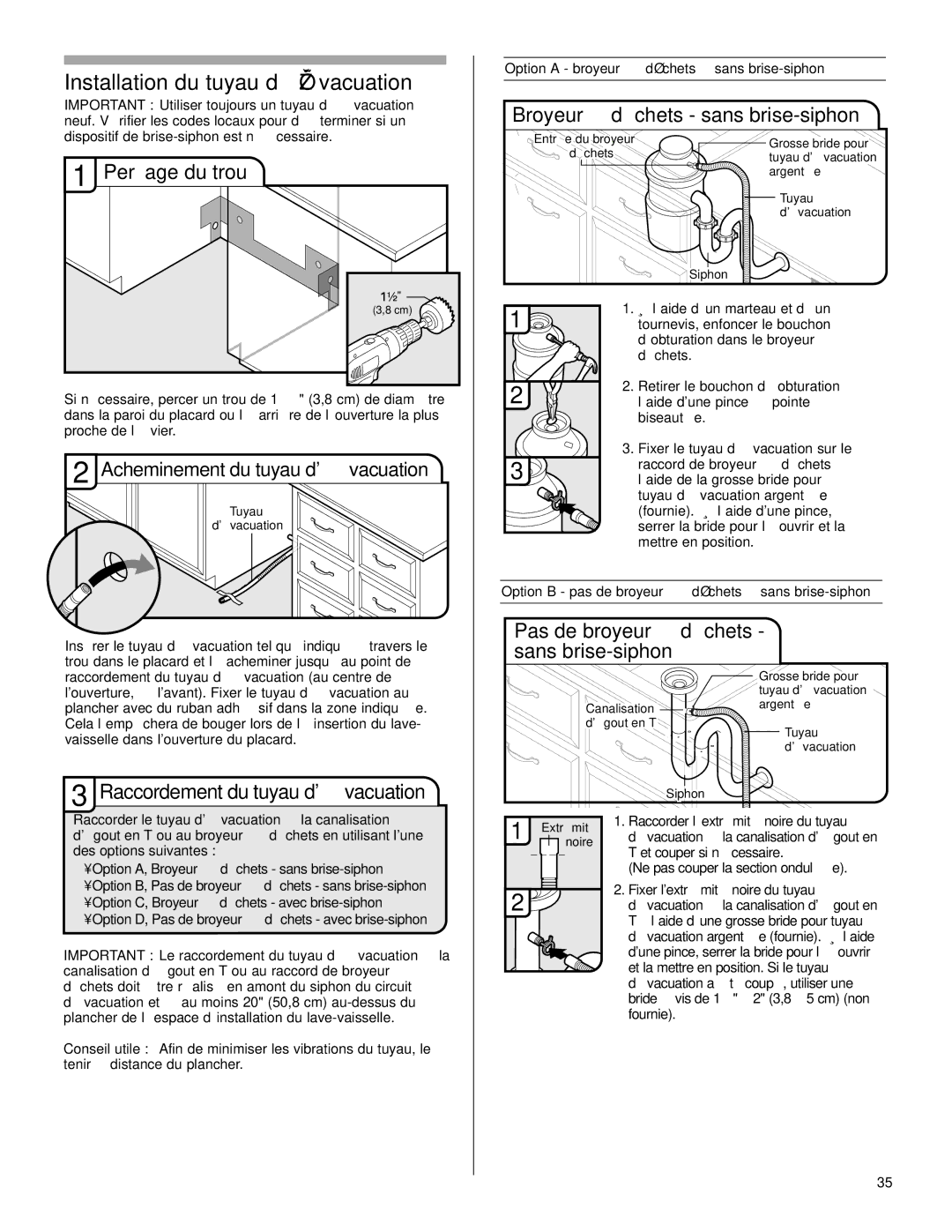KUDS40FVPA, KUDS50FVPA, KUDE70FVPA, KUDC03IV, KUDS30IV specifications
The KitchenAid W10056407A and its associated dishwasher models, including KUDE60FVPA, KUDS40FVPA, KUDS50FVPA, and KUDE70FVPA, represent a blend of innovation, efficiency, and elegant design in today’s modern kitchen appliances. These models are designed to provide exceptional cleaning power while being user-friendly.One of the standout features of these dishwashers is their Advanced Clean Water Wash System, which uses a combination of powerful jets and filtration to ensure that every dish is cleaned thoroughly, even the dirtiest pots and pans. This technology minimizes the need for pre-rinsing, saving both time and water. The Efficient Wash Cycle allows users to customize the cleaning according to their needs, providing options for heavy-duty washing or light cycles for delicate items.
Another remarkable feature is the ProWash Cycle, which automatically determines the optimal cycle for the load being washed. This technology analyzes soil level and adjusts the wash time and water usage accordingly, making it a smart choice for those who want to conserve resources without sacrificing cleaning results. Additionally, the models boast a Quiet Operation, with advanced sound insulation technology that ensures a near-silent experience, allowing users to carry on with other activities without being disturbed by noise from the dishwasher.
The adjustable racks in models like the KUDE70FVPA make loading and unloading a breeze. The upper rack can be adjusted to accommodate taller items without compromising space in the lower rack, enhancing the overall capacity of the dishwasher. Furthermore, the complete stainless-steel interior not only adds to the durability of the appliance but also contributes to better drying performance, as it helps retain heat during the drying cycle.
These KitchenAid dishwashers also come equipped with a high-efficiency spray arm that ensures even water distribution, reaching every corner for a comprehensive clean. The sleek design and innovative features make these models not only functional but also aesthetically pleasing, complementing any modern kitchen decor.
In terms of energy efficiency, these appliances are Energy Star certified, confirming they use less energy and water without sacrificing performance. This commitment to environmental sustainability reflects KitchenAid's dedication to quality and responsibility, making these models an excellent choice for eco-conscious consumers. Overall, the W10056407A, KUDE60FVPA, KUDS40FVPA, KUDS50FVPA, and KUDE70FVPA dishwashers provide a perfect blend of performance, convenience, and style.

